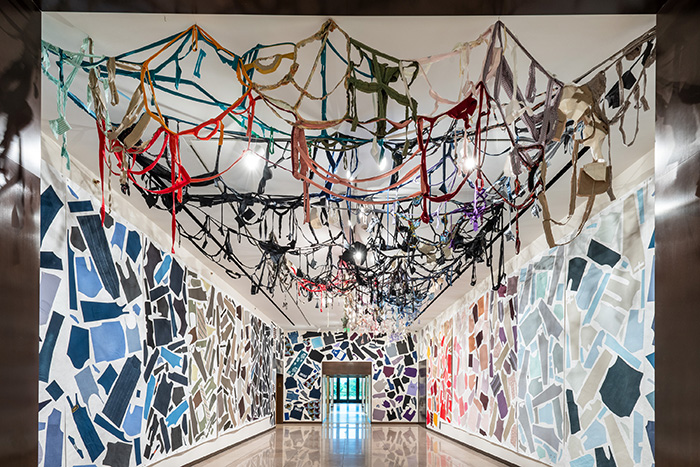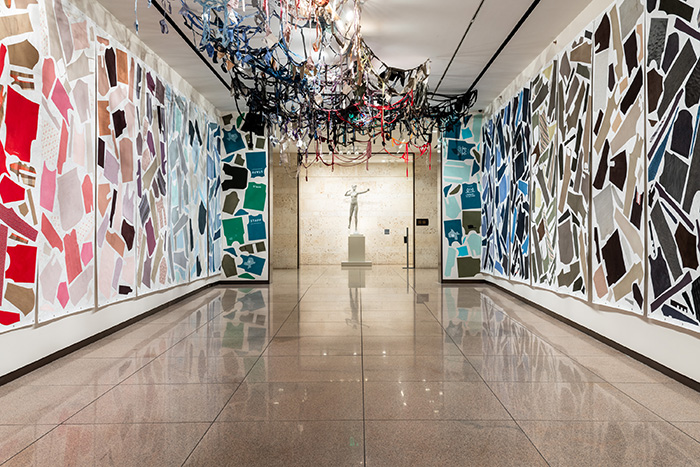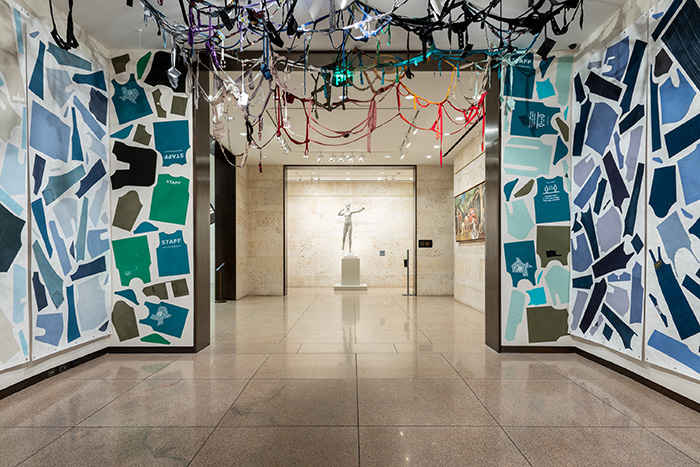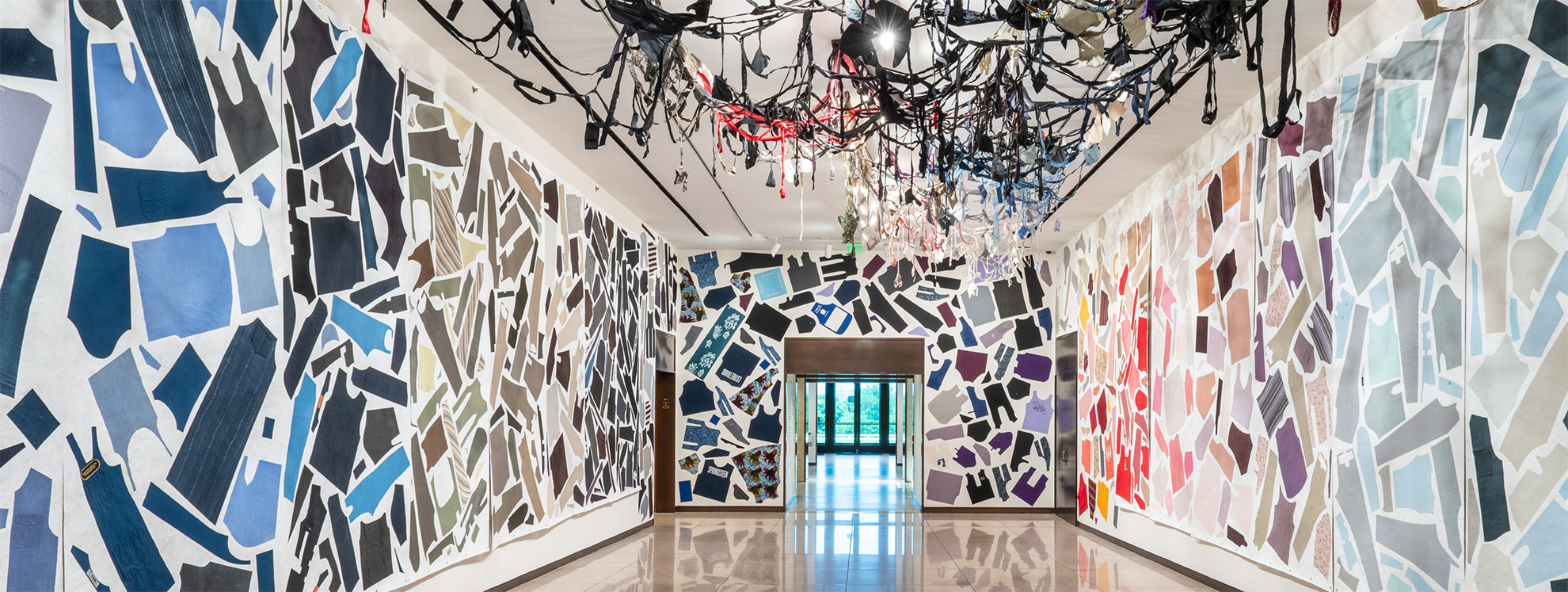In our current era of fast fashion and 15-second TikTok videos, Jean Shin is looking for permanence, or at least a way to honor the people whose work and energy is directed at one common goal, at one specific place, during one particular point in time.
In both commissions, Shin snips the seams of these discarded garments and uses the textiles to create a large-scale wall mural that’s topped with a soft skeletal structure of shoelaces, suspenders, lanyards, undergarments, and more hanging above.
Using clothing as an art material makes Shin’s work universal. Some pieces may have been stained or not fit the wearer anymore, while others might have more sentimental, symbolic meaning. But when Shin brings them all together, they become a sort of living history. Some elements from her 2004 show are even woven into The Museum Body, deepening what Shin calls “an archive of the artistic world.”
“My creative process depends on other people’s willingness to be open and make art together,” she says. “Do you think anyone would have held onto these clothes for the past 20 years? But I did! They become an institutional memory, and in doing so show that people and their contributions are not disposable.”

1 ⁄4
Portrait of Jean Shin, Courtesy the artist and Philadelphia Museum of Art, Photo by Joseph Hu

2⁄4
Jean Shin (b. 1971), The Museum Body, 2024, and Cut Outs and Suspended Seams, 2004/2024, cut fabric (clothes from Amon Carter Museum of American Art and Museum of Modern Art employees), thread, adhesive, and Tyvek, Courtesy of the artist, Amon Carter Museum of American Art, Museum of Modern Art, and Praise Shadows Gallery

3 ⁄4
Jean Shin (b. 1971), The Museum Body, 2024, and Cut Outs and Suspended Seams, 2004/2024, cut fabric (clothes from Amon Carter Museum of American Art and Museum of Modern Art employees), thread, adhesive, and Tyvek, Courtesy of the artist, Amon Carter Museum of American Art, Museum of Modern Art, and Praise Shadows Gallery

4 ⁄4
Jean Shin (b. 1971), The Museum Body, 2024, and Cut Outs and Suspended Seams, 2004/2024, cut fabric (clothes from Amon Carter Museum of American Art and Museum of Modern Art employees), thread, adhesive, and Tyvek, Courtesy of the artist, Amon Carter Museum of American Art, Museum of Modern Art, and Praise Shadows Gallery
“More and more my work has become site-specific to tell the story of its unique habitat, and all the beautiful species and biodiversity that enrich the ecosystem,” Shin says. “Today’s consumerism and fast fashion absolutely have an impact, with all these things we buy ending up in landfills and destroying our habitat. We think about the clothes that we wear and how they protect our bodies, but are we protecting our bigger body, the planet?”
The textiles Shin cuts apart are reminiscent of fashion pattern pieces, carefully laid out in the mural as though they’re on a cutting table, but she advises viewers to also think about the negative space that’s fragmenting the skirts, shirts, and trousers.
Since the exhibition is on display for nearly a year, Shin anticipates visitors returning often. “People feel very invested in this work, especially if it’s their clothing on display. They are literally a piece of art, and I think that reaction when they realize it is a delight.”
—LINDSEY WILSON





